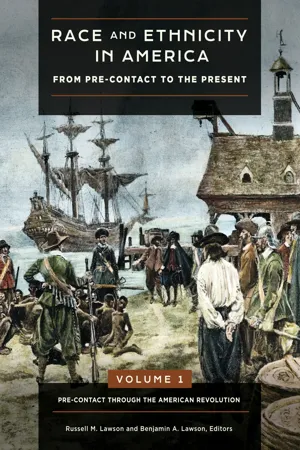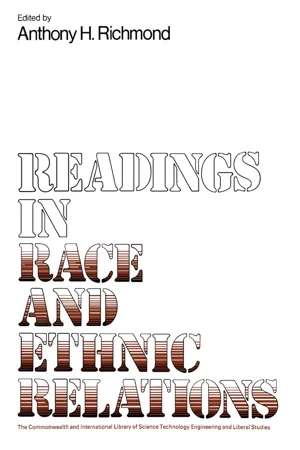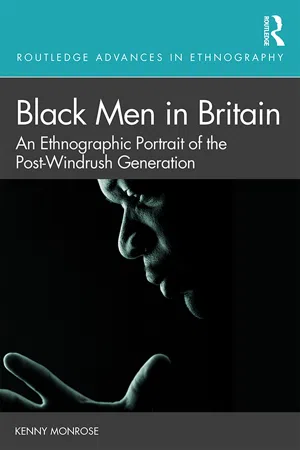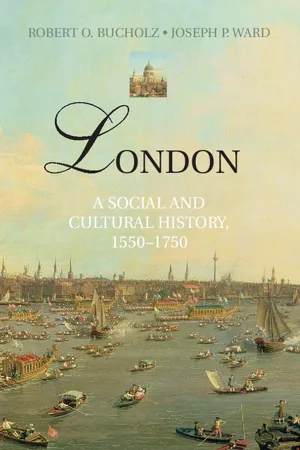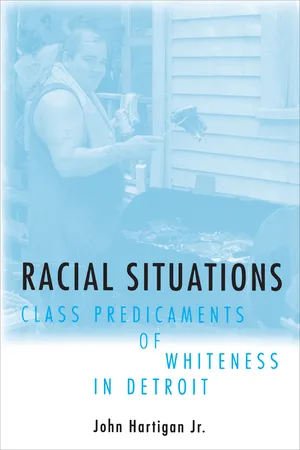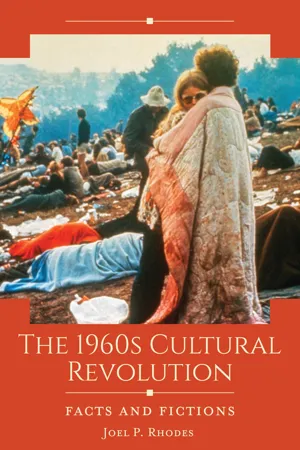History
Race Riots
Race riots refer to violent civil disturbances that occur between different racial groups within a community or society. These conflicts often stem from underlying racial tensions, discrimination, and socioeconomic disparities. Race riots have been a recurring phenomenon throughout history, with notable examples including the Tulsa race massacre in 1921 and the Los Angeles riots in 1992.
Written by Perlego with AI-assistance
Related key terms
1 of 5
6 Key excerpts on "Race Riots"
- eBook - ePub
Race and Ethnicity in America
From Pre-contact to the Present [4 volumes]
- Russell M. Lawson, Benjamin A. Lawson, Russell M. Lawson, Benjamin A. Lawson(Authors)
- 2019(Publication Date)
- Greenwood(Publisher)
RRace RiotsRace Riots, or racial disturbances, have been a recurring feature of American history. Contemporary movements like Black Lives Matter and the sometimes-violent responses to recent police shootings of African Americans fit into a larger decades-old pattern. There are deeper, structural roots of Race Riots that have occurred time and time again.Racism and race-based inequality have longer histories—most significantly the history of slavery—but one of the first modern-style Race Riots occurred in 1863 in New York City. Also known as the Draft Riots, this large-scale uprising took on a clear racial tone. During the Civil War (1861–1865), local tensions, class inequality, racial prejudice, and ethnic strife plagued New York City. It is tempting to compare American urban insurrections like the 1863 New York riots with the European socialist (and communist) upheaval of 1848, as both had strong class elements. The causes of the New York City draft riots—antiwar sentiment, class conflict, and racial tensions—remain explosive issues today.Rioting began on Monday July 13, 1863, the day the draft was implemented in New York. Rioters demonstrated discontent in various ways, including burning the houses of the wealthy and of blacks, and storming weapons arsenals to obtain arms. Violence in the riot had a strong racial element; frustrated white workers saw blacks as the cause of the Civil War. Many blacks, unaware of the racial violence at first, were caught on their way to grocery stores to obtain the evening meal for their families. Attacks on houses where blacks resided were also common; by burning whole blocks of crowded tenements rioters ensured Manhattan’s blacks felt unwelcome. Gangs of “rowdies” perpetrated much of the violence, and they savored the brief sensation of power that the confusion of the riots afforded them. These gangs, mostly of young immigrant males, occupied themselves by throwing rocks, tearing up railroad lines, stealing trifles, and harassing blacks and women. Although Germans also participated, these gangs were overwhelmingly Irish. As often happens in riots, rampant looting occurred, as many thieves took advantage of the chaotic situation; in particular, looters raided liquor stores, which in turn increased their audacity for more outrageous actions. Faced with the reality of mob rule on the streets of Manhattan, the police resorted to violent measures in order to regain control. In addition, federal troops were brought in to curtail the violence. Only on Friday, July 17, did the municipal authorities regain control of the streets. - eBook - PDF
Reading in Race and Ethnic Relations
The Commonwealth and International Library: Reading in Sociology
- Anthony H. Richmond(Author)
- 2013(Publication Date)
- Pergamon(Publisher)
Race, Politics and Conflict This page intentionally left blank The Precipitants and Underlying Conditions of Race Riots* STANLEY LIEBERSON and ARNOLD R . SILVERMAN THE immediate precipitants and underlying conditions of Race Riots in the U.S. during the past half century are the subject of this paper. Using both hard and soft data, employing journahstic accounts as well as census data, w e consider in a somewhat more systematic fashion the influence of diverse factors suggested as causes of riots in sociological case studies and texts on collective behavior.^ Riots, as distinguished from lynchings and other forms of collective violence, involve an assault on persons and property simply because they are part of a given subgroup of the community. In contrast, lynchings and other types of violence are directed toward a par-ticular individual as a collective response to some specific act. In practice, *The comments of Alma and Karl Taeuber, and David Heise are gratefully acknow-ledged. Ήerbert Blumer, Collective Behavior'*, in Alfred McClung Lee (ed.). New Outline of the Principles of Sociology, N e w York: Barnes and Noble, 1951, pp. 165-222; Chicago Commission on Race Relations, The Negro in Chicago, Chicago: University of Chicago Press, 1922, pp. 1-78; Allen D . Grimshaw, Three Major Cases of Colour Violence in the United States'*, Race, 5 (1963), pp. 76-86, and Factors Contributing to Colour V i o -lence in the United States and Britain, ibid. 3 (May 1962), pp. 3-19; Allen D . Grimshaw, Urban Racial Violence in the United States: Changing Ecological Considerations, American Journal of Sociology, 66 (1960), pp. 109-19; Kurt Lang and Gladys Engel Lang, Collective Dynamics, N e w York: Thomas Y. Crowell, 1961; Alfred McClung Lee and Norman Daymond Humphrey, Race Riot, N e w York: Dryden Press, 1943; Elliott M. Rudwick, Race Riot at East St. Louis, July 2,1917, Carbondale: Southern Illinois University Press, 1964; Neu J. - eBook - ePub
Black Men in Britain
An Ethnographic Portrait of the Post-Windrush Generation
- Kenny Monrose(Author)
- 2019(Publication Date)
- Routledge(Publisher)
Unlike incidents involving race, however, such incidents are habitually framed within the public imagination as disputes, demonstrations or at their very worst skirmishes. An example is the representation of the carnage that blighted towns such as Carlisle, Stockton, Wellington, Telford, North Shields, Newcastle and Sunderland in the 1990s: the events were not classified as riots but merely as heavy incidents of antisocial behaviour. In contrast, similar incidents of social unrest that occur in heavily populated minority ethnic areas transcend from ‘disturbances’ to being labelled full-scale Race Riots. 12 Observe the manner in which the riots in Toxteth in Liverpool, and years later in Burnley in Lancashire, were presented (Lea, 2002). The thinly veiled subtext that typically lies beneath the definition of such events becomes transparent to those who can decipher the cryptic inscriptions of the media’s propaganda machine, which make these events seem as if they were only about poor policing, when in truth they were equally about racial discrimination. Suffice to say that, in the imagination of the British news media, the majority group do not riot – minority ethnic groups do. The earliest documented violent conflict of note involving black people in Britain occurred in Cardiff in 1919. The ‘Cardiff Negroland Conflicts’ were the first mass black declaration of resistance to the violent racism they were subject to. After the First World War, Britain experienced heightened levels of unemployment and homelessness, compounded by poor living conditions. As is common at such times, those of visible difference were held to account and blamed for the economic demise of the nation (Dabydeen et al., 2010; Fryer, 2010). As a result of this indictment, racially motivated attacks took place in a number of British port towns such as Liverpool and Exeter, but more potently in Cardiff - eBook - PDF
London
A Social and Cultural History, 1550–1750
- Robert O. Bucholz, Joseph P. Ward, Joseph P. Ward(Authors)
- 2012(Publication Date)
- Cambridge University Press(Publisher)
This brings us to a deeper reason for historians to fixate on riots. On the face of it, riot would seem to be an economical word for people running amok in a moment of collective hysteria, committing random and indiscriminate havoc as the spirit moves them. This was sometimes the case: take the behavior of London’s apprentices. There were some 30,000 apprentices in the city in 1600, roughly 15% of the population, most of them single young men with time on their hands. Attracted to radical religion and jealous of their rights, following the tradition of the hue and cry, called out by shouts of “’Prentices and clubs!” or “Shovels and spades!,” appren- tices were frequently at the head of political and religious demonstrations (see discussion later). But they also engaged in tumults that had nothing do with principled challenges to authority. Thus, in July 1599 the lord mayor bewailed “troops” of “riotous and unruly apprentices” armed with 270 London: A Social and Cultural History, 1550–1750 “long staves and other weapons” who hung about near Hackney on sum- mer evenings, setting men’s corn growing in the fields on fire, breaking down glass windows and signs hanging at men’s doors, thrusting down of bricks with their staves from the tops of brick walls, pulling up of gates and stiles, breaking into orchards and stealing of fruits, beating of Her Majesty’s watches, and diverse other rebellious parts. Such pranks have led one historian to conclude that “the disorderly behaviour of young men in sixteenth-century London was hardly ever organized or purposeful, at least not consciously.” 1 Beginning in the 1950s and ’60s, historians such as George Rud´ e and E. P. Thompson began to argue that most riots were organized and purposeful, and that in fact they served as a form of communication from those at the bottom of the social scale to those at the top. - eBook - PDF
Racial Situations
Class Predicaments of Whiteness in Detroit
- John Hartigan Jr.(Author)
- 2020(Publication Date)
- Princeton University Press(Publisher)
Rather than emphatically discounting race, their interpreta-tions suggest that the prior means of characterizing conflicts as racial were dissolving, leaving an emergent set of criteria to be uncertainly dis-cerned in this unfolding situation. This new order of significance is more diffuse, less communal, than modes through which racialness had previ-ously been experienced and interpreted. The distinction drawn by residents between the riots of 1943 and 1967 is supported by perhaps the most exhaustively thorough treatment of the later riot. Sidney Fine, in Violence in the Model City: The Cavanagh Ad-ministration, Race Relations, and the Detroit Riot of1967, demonstrates that violence and upheaval were racial in character, though not di-rectly interracial. This distinction attempts to assess the disproportion-ate participation of blacks in the riot along with their lack of interest in striking out against any and all whites. The Detroit rioters, after all, were mainly although not entirely black, the disturbances occurred in black neighborhoods, and it was policemen and firemen, the overwhelm-ing majority of whom were white, and business establishments, mostly white-owned, that the rioters attacked. . . .There was, as a matter of fact, a very small amount of interracial fighting during the riot, and some rioters were very hostile to whites; but the arrestees, it will be recalled, overwhelmingly rejected the interpretation of the riot as 'an anti-white event.' Whites in the riot area were sometimes treated with derision, but they were rarely menaced. As he recounts a number of reported in-stances of whites and blacks looting together, Fine adds a quote from a black character in Barbara Tinker's novel, When the Fire Reaches Us: The riot was about the most integration I have ever seen in Detroit. 83 - eBook - PDF
The 1960s Cultural Revolution
Facts and Fictions
- Joel P. Rhodes(Author)
- 2022(Publication Date)
- ABC-CLIO(Publisher)
After intense anti-draft riots during the Civil War, most notably in New York, bloody labor conflicts, often between workers and soldiers, broke out across the nation. Reactions to these riots were strong, and in response, the modern urban police force and National Guard were cre- ated. In the twentieth century, around the two world wars, rioting turned predominantly interracial in nature, as whites and Blacks battled one another on the fringes of swelling inner-city ghettos. As historian Richard Hofstadter observed, “America, by history and habit has been a violent society” (Allen and Adair 1969, 45). Still, it is important to highlight that the intractable ghetto conditions Kerner and Tomlinson identified and the historical context of collective violence are the reasons behind but not the sole causes of urban Blacks rioting in the sixties. Powerful and volatile historical forces converged in the mid- 1960s. Heightened racial identity and rising expectations, due to the civil rights and Black Power movements, mixed uneasily with rising frustra- tion over the bleak prospect for continued progress in northern cities. These conflicting impulses generated the rage and fury that animated col- lective violence. Perhaps it should not be surprising that the Watts riot broke out only five days after Lyndon Johnson signed the Voting Rights Act of 1965. The Kerner Commission characterized developments this way: Recently, other powerful ingredients have begun to catalyze the mixture: • Frustrated hopes are the residue of the unfulfilled expectations aroused by the great judicial and legislative victories of the Civil Rights Movement and the dramatic struggle for equal rights in the South. • A climate that tends toward approval and encouragement of violence as a form of protest has been created by white terrorism directed against nonviolent protest; by the open defiance of law and federal authority by state and local officials resisting desegregation.
Index pages curate the most relevant extracts from our library of academic textbooks. They’ve been created using an in-house natural language model (NLM), each adding context and meaning to key research topics.
